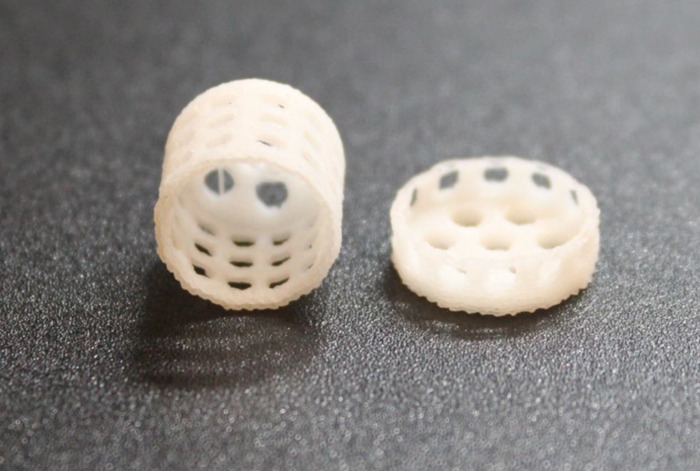Published on
Updated
Reading 3 mins.
In a very recent study, American plastic surgeons announce that they have designed a 3D printed scaffold capable of reconstructing the nipple during breast repair surgery. Perhaps the final touch of a long course?
Last step of a breast reconstruction, the reconstruction of the nipple is often difficult, even disappointing for women who have undergone a mastectomy. When it is not possible to preserve the patient’s nipple, various techniques attempt to recreate this area from skin tissue. But healing processes often cause the reconstructed nipple to flatten over time and it can become completely flat within a year or two. The tattoo also remains a very acceptable “visual” option, but does not provide the desired natural relief. However, the fruit of a latest 3D printed research could well provide a lasting solution.
An absorbable polymer to recreate the nipple
Dr. Jason Spector, professor of plastic surgery at Weill Cornell Medicine in New York, and his team had the idea of building a 3D printed scaffold made of a polymer already widely used in surgical devices (Poly-4 -Hydroxybutyrate or P4HB) to recreate the size and shape of a nipple.
Using an animal model, they showed that over time the scaffold breaks down and the body’s natural healing process refills the space with fatty and vascular tissue that we usually found in a nipple, allowing it to remain raised.

“The best tissue engineer is the body itself. If you create the right conditions and use the right size scaffold, the body itself will make the tissue” hears Dr. Spector.
The team are currently refining their technique in a second study and hope to reduce the time it takes for the scaffold to dissolve from 6 months to 3 months.
One more step to make women feel whole again
If successful, Dr. Spector and his team believe the device could be available to women undergoing mastectomy very quickly, as the material is already safe and widely used in men. In the United States, it could therefore go through a rapid process of authorization by the Food and Drug Administration. 3D printed scaffolds can be made in a range of sizes and shapes to meet individual patient needs or even custom printed to match the remaining nipple in a patient who has had a unilateral mastectomy. For Dr. Spector this method could also reduce flattening after nipple-sparing breast reconstruction.
“This is an important step in helping patients who choose to have breast reconstruction after mastectomy feel whole again.” he concludes.
In France, more than 20,000 women concerned each year
For Pr Laurent Lantieri, specialist in plastic and reconstructive surgery contacted by Doctissimo, the study is of real interest:
“Finding a nipple in operated women is a real problem, but with our current reconstruction techniques, 70% of our patients lose their reconstructed nipple in 3-4 years, because it collapses. What is original in this study is the little known material, this P4HB which is in fact a biological material from a bacterium, therefore a natural product with which we can do a good number of things. It’s only an animal test at the moment, but it’s a step forward.”
However, the expert is hopeful of being able to solve this aesthetic and physical problem in the short term, which affects many women:
“In France too, we are participating in research on this subject. In particular, we have an ongoing study, for which we hope to begin clinical trials as early as this year 2023 to re-implant a nipple completely lost following cancer. In France, about 20,000 women have a mastectomy every year. So there is a lot of research to improve the comfort and reconstruction of all these women.”
